One UEA PhD student’s journey to deep within the Arctic circle
SCIENCE ON ICE
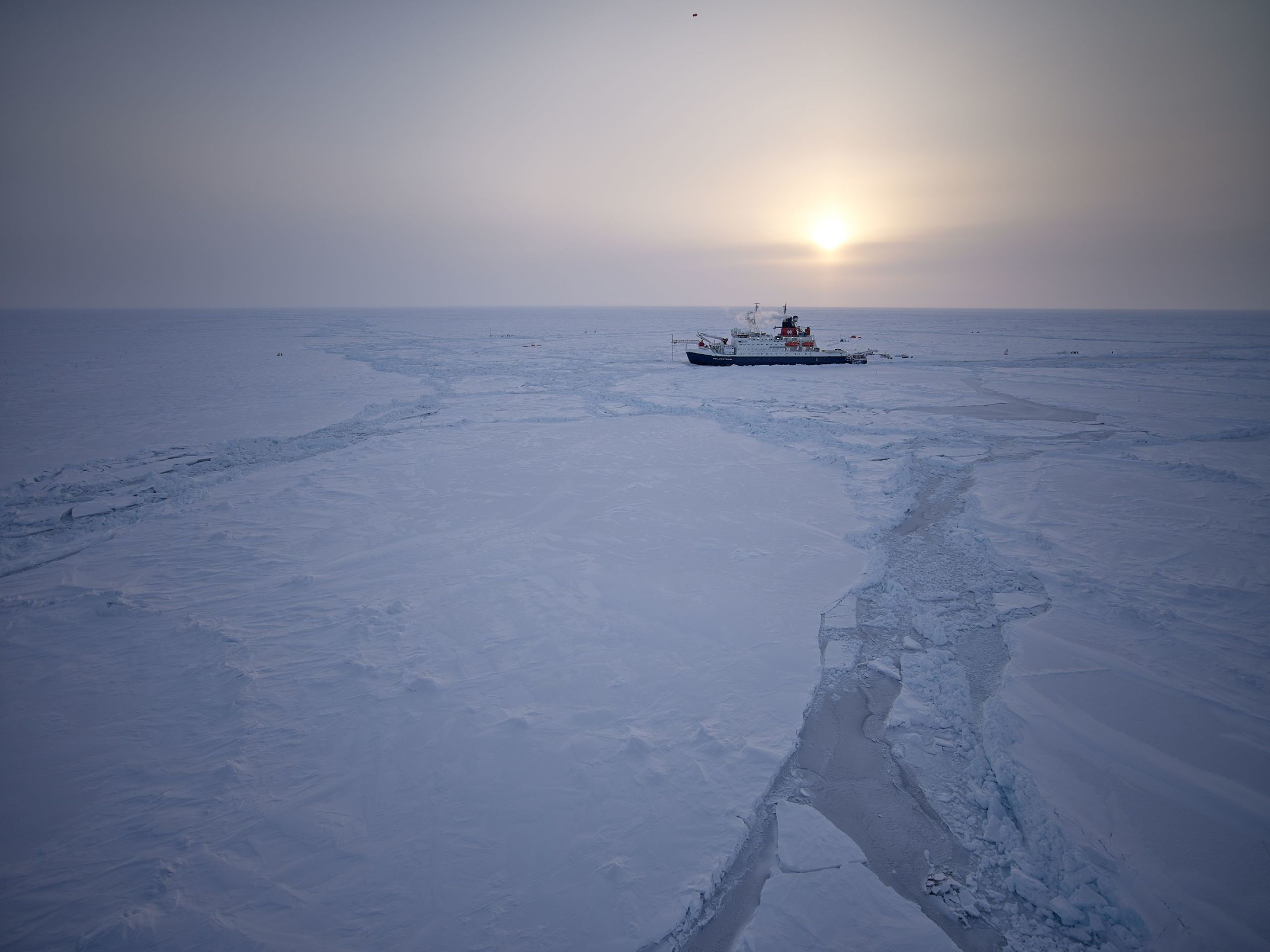
In the summer of 2020, when much of the world was going in and out of lockdown, an international team of scientists were drifting with the Arctic ice onboard a German icebreaker, the RV Polarstern. UEA EnvEast-funded PhD student Elise Droste was among them, there to measure the Arctic Ocean’s capacity for absorbing carbon, and understand how this will change as a result of global warming.
From sea ice to seabed, 4km below, Elise’s story is one of polar bear spotters, precarious sampling sites, and vital international collaboration in the fight against climate change.
The first time I saw sea ice was during an Antarctic expedition to the Weddell Sea. I was mesmerised by it. Up to that point, sea ice had only been something I had read and heard about. I’d never dreamed of being able to see it, let alone get close to it, and study it. But being there, seeing it, was an exhilarating experience. I can still hear the breaking of the ice as we pushed our way through, the whole ship rumbling.
So when the opportunity to join the MOSAiC expedition, which was being spearheaded by the Alfred Wegener Institute, came along, I jumped at the chance – it sounded like an epic scientific adventure. Not only would it take me to the Arctic for the first time, but I knew my research would fit perfectly with the aims of the expedition. I was able to grasp this opportunity thanks to the unwavering support from my supervisors Dorothee Bakker, in the School of Environmental Sciences at UEA, and Mario Hoppema, and the openness of the MOSAiC team, especially Markus Rex and Allison Fong.
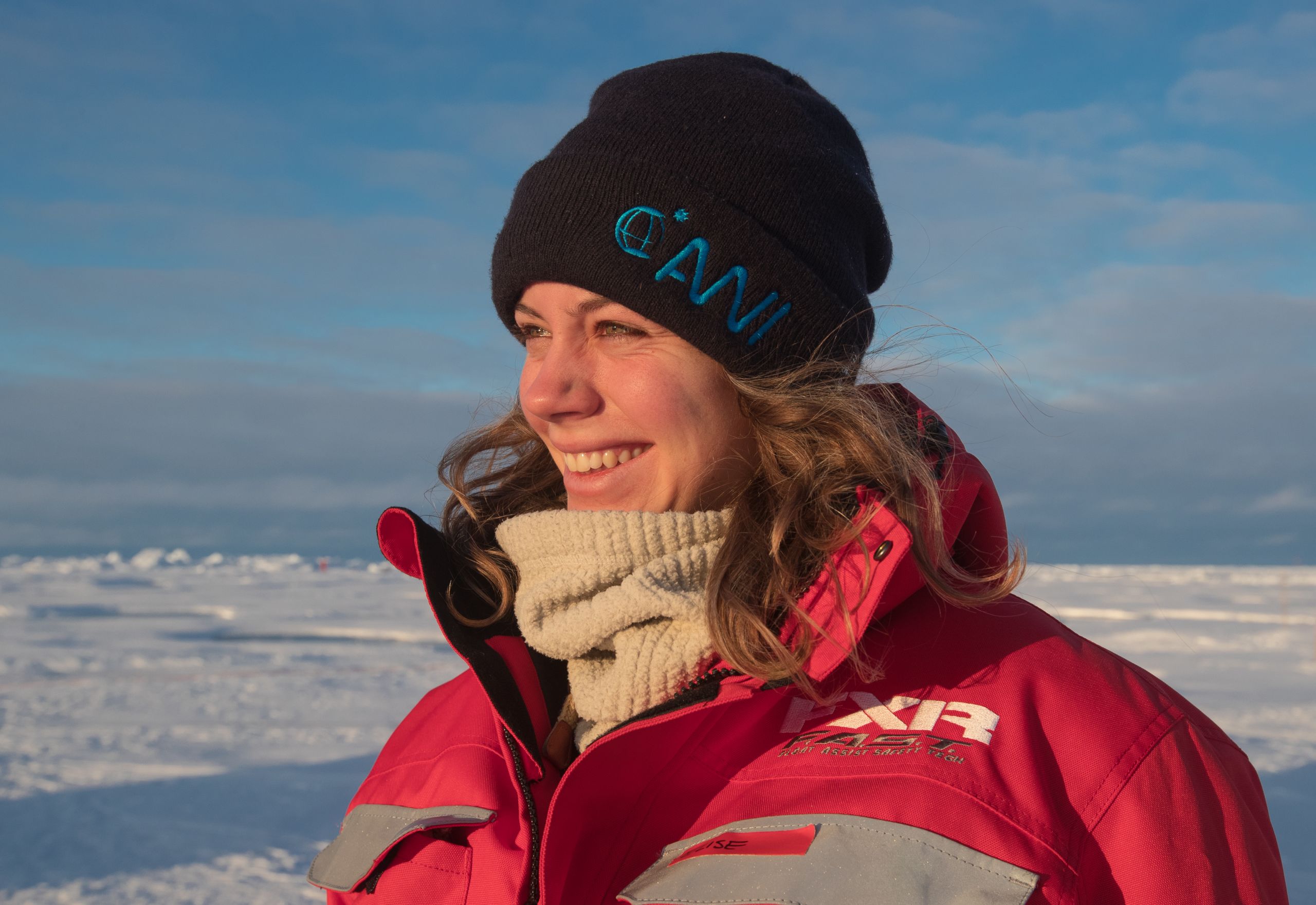
UEA PhD student Elise Droste. Photo: Lianna Nixon
UEA PhD student Elise Droste. Photo: Lianna Nixon
For decades we’ve known we are making a ‘discernible human influence on global climate.’ Carbon dioxide is accumulating in the atmosphere as a result of anthropogenic activities and the current rate of emissions is so fast that the natural system cannot maintain its previous balance. The result? The climate is rapidly changing.
The oceans, and especially the polar oceans, play an important role in sustaining this natural balance. They absorb a lot of the carbon dioxide (CO2), but the amount and rate at which they absorb greenhouse gases is not constant in time or space.
It’s important that we are able to accurately quantify the capacity of the polar oceans to take up CO2 and predict how it will change. This will help us understand what our climate will look like in the future and what the effect will be on ecology, biodiversity, and the human population. It’s important to understand the drivers and processes that affect the carbonate chemistry of the seawater on all kinds of time scales, including seasonal and interannual time scales. To do this we need to conduct research throughout entire years, from atmosphere to seabed, and this is where MOSAiC comes in.
Voyage to the 'epicentre of global warming'
During most expeditions we take limited snapshots of a transect, an ice-floe, or an ocean profile. Novel technologies now allow us to monitor the oceans for much longer, often by deploying floats, sea gliders, and moorings. But nothing beats drifting along with an ice floe, going onto to the ice every day and experiencing it fully in person, not just through numbers and graphs.
And so this is exactly what the MOSAiC expedition aimed to do: a year-long voyage drifting through the Arctic Ocean – trapped in ice. Coming and going in months-long shifts, the scientists onboard took the closest ever look at the high Arctic, the ‘epicentre of global warming.’ They did so in a highly interdisciplinary way, covering measurements in all spheres – the atmosphere, the sea ice, and the ocean, and the ecology and biogeochemistry of all three.
While having a scientific vessel drifting along the Arctic sea ice for an extended period of time has been done before (the Fram expedition led by the Norwegian explorer Fridtjof Nansen in the 1890s and the Surface Heat Budget of the Arctic Ocean – or SHEBA – study in the 1990s), the uniqueness of MOSAiC was in its interdisciplinarity and extent of international collaboration.
"We were working in the home of the polar bears. Being a polar bear guard is an epic way of contributing to science"
I joined MOSAiC in August 2020, boarding a transit vessel in Bremerhaven, northern Germany, after two weeks of quarantine. It was a nerve-racking two weeks. Despite all of the safe-guards, you never knew for certain whether COVID-19 had sneaked its way through. Only when I was on the RV Polarstern and we were heading north did I have the complete certainty that it was really happening.
Once onboard I joined Team ECO, the team responsible for ecosystem measurements. I was there to study the carbonate chemistry of the Arctic seawater and the interactions between seawater, sea ice, and atmosphere regarding the exchange of carbon. My aim was to understand how the air-ice-sea CO2 exchange changes throughout the seasons and what the drivers are that affect the variability and trends in marine CO2 uptake. This will help us to predict how the CO2 content and the acidity of the Arctic Ocean will change with climate change and what the impact of that will be on the climate and the ecosystem.
To do this, I needed to collect samples from multiple depths all along the drift track of the ice floe. We used a CTD rosette, a metal structure with many sensors and sampling bottles mounted on it. The rosette is lowered to the bottom of the ocean with a cable and winch. On its way back up to the surface, the sample bottles are closed one by one at predefined depths, ranging from over 4000 metres to just two metres below sea level. Once the rosette gets back up onto the ship, a whole team of very eager scientists line up in order of sampling priority and take their samples from each of these bottles.
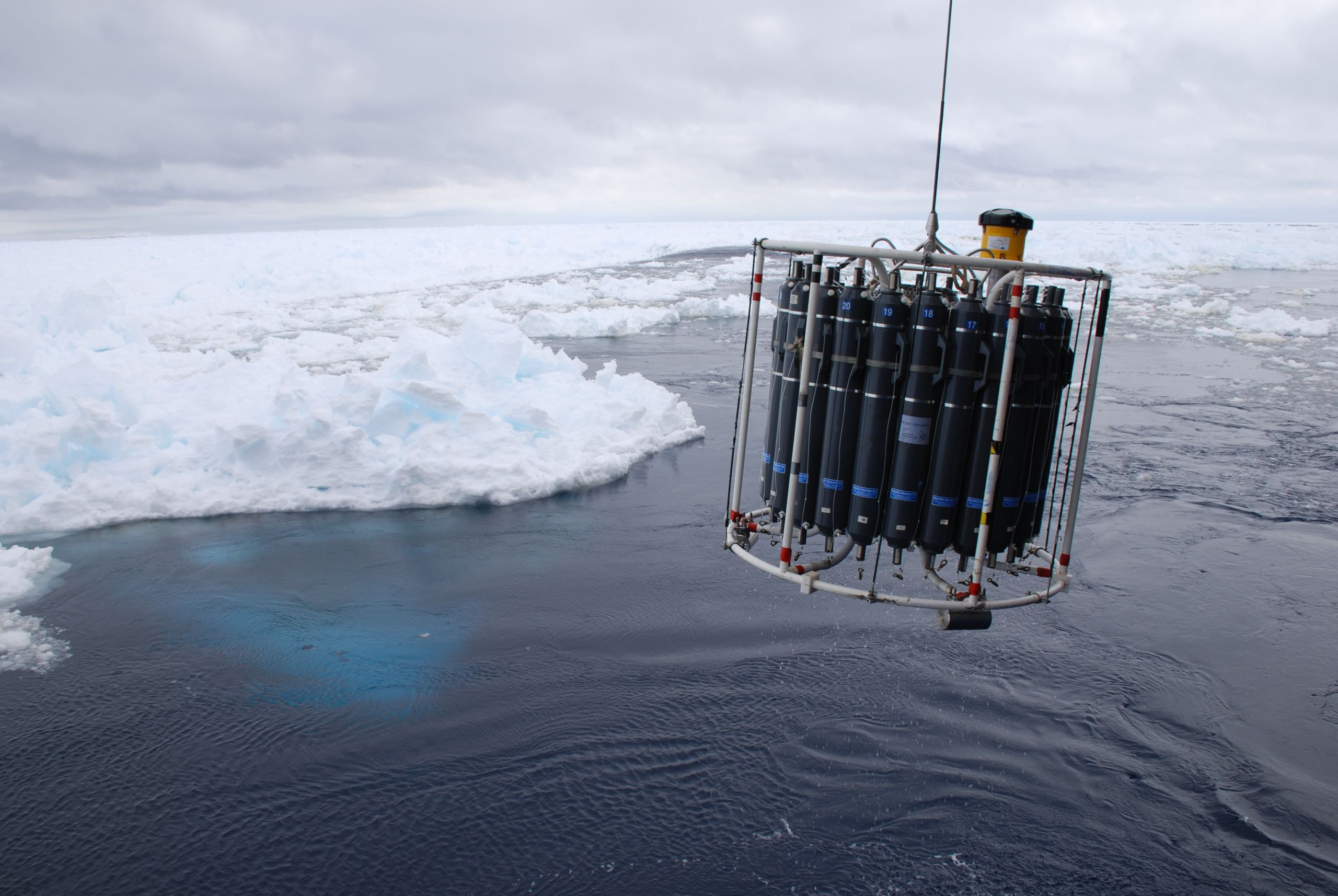
A CTD rosette. Photo by the author
A CTD rosette. Photo by the author
The method of sample collection for dissolved inorganic carbon (DIC) and total alkalinity (TA), the carbonate system state variables we were studying, differed depending on where the samples were taken from. But the most important rule that applied to all is that contact of the sample with the atmosphere must be minimised at all times to avoid the CO2 concentration changing in the sample. This means no bubbles! Surprisingly tricky when collecting water samples.
After the samples were collected, they were fixed in a way that the concentration of the DIC and TA wouldn’t change over time, sealed to ensure no contamination with the ambient air, and carefully stored until analysis back on dry land.
Photos this section: Lianna Nixon; Alfred-Wegener-Institut
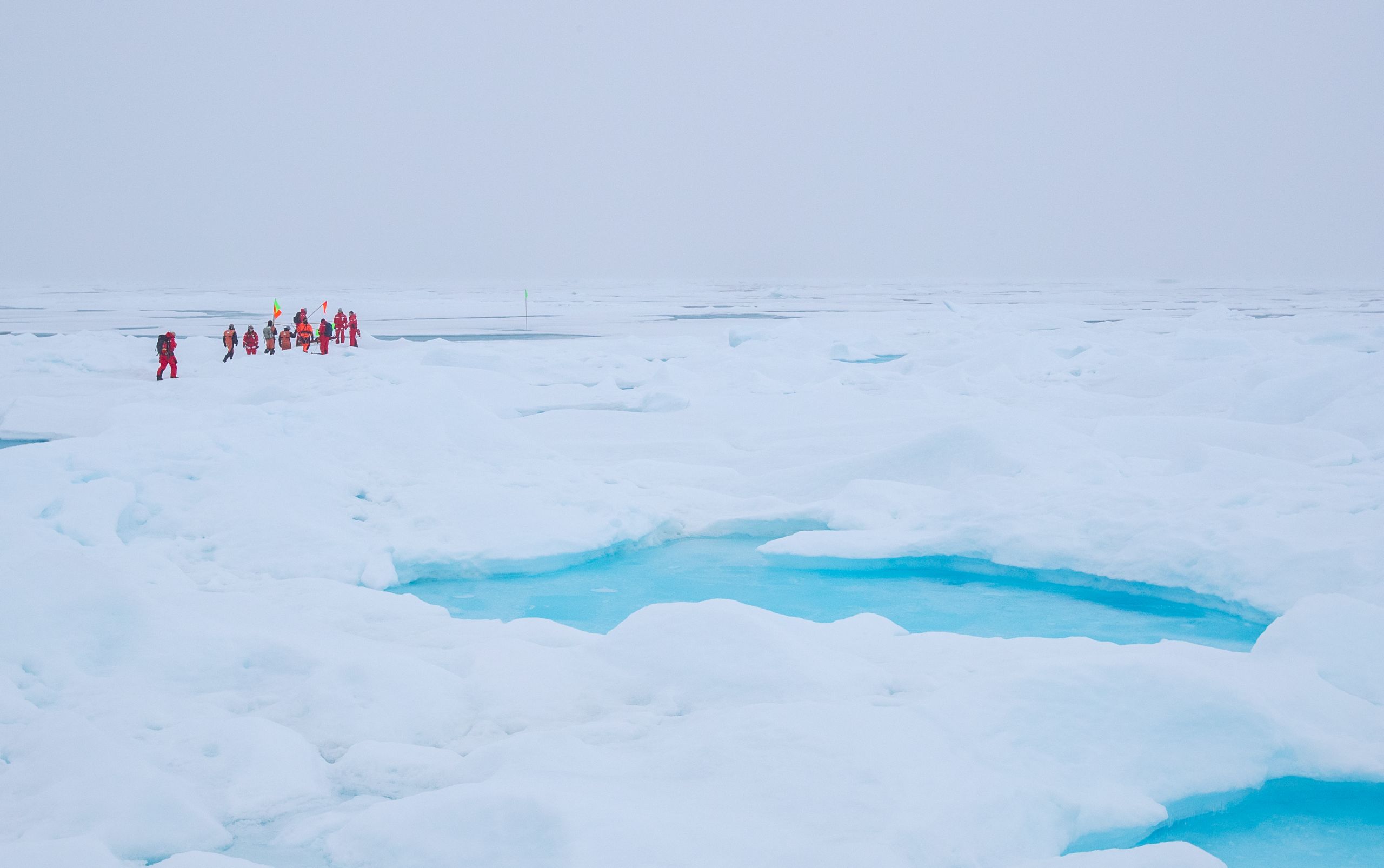
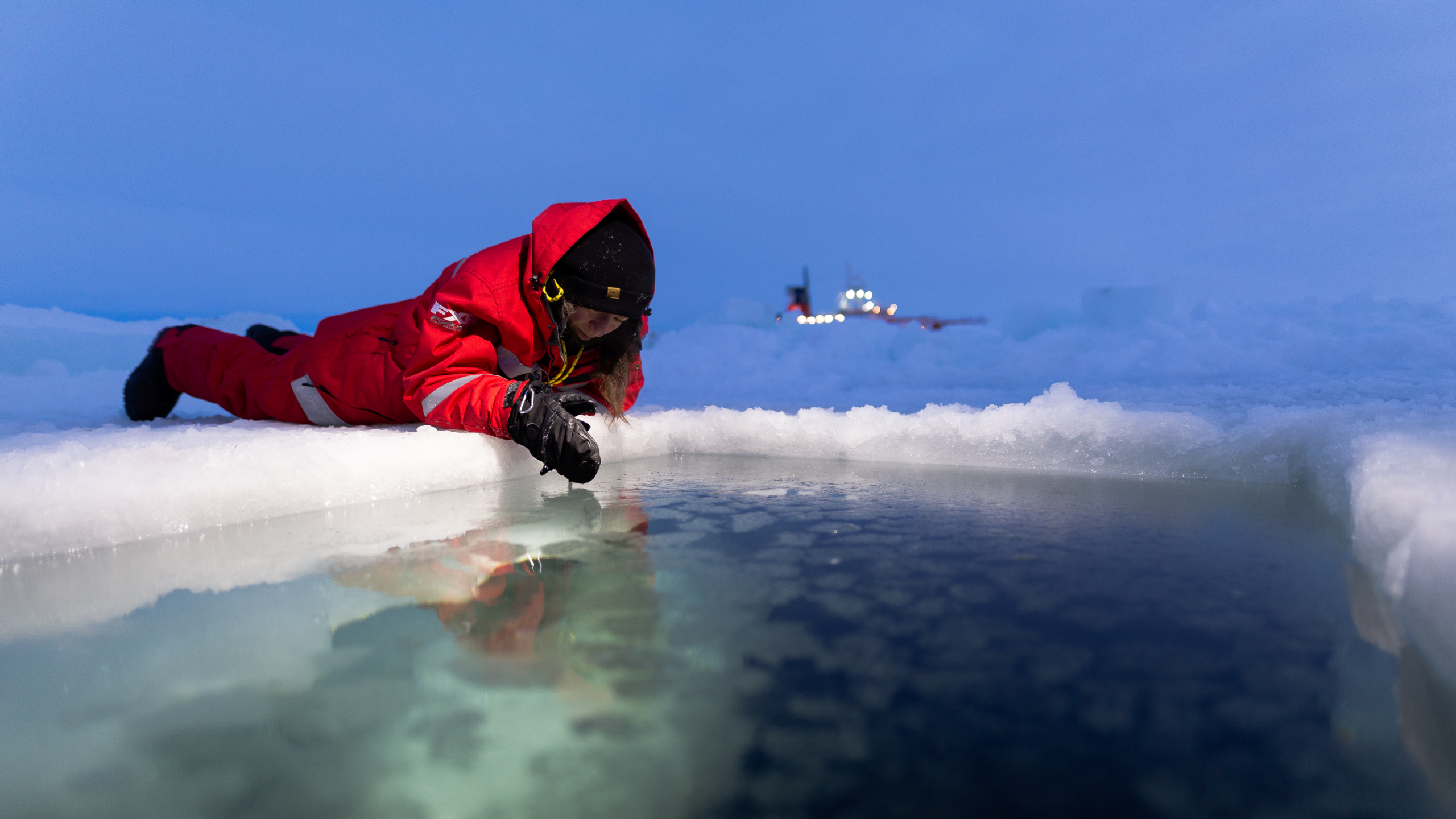
Life onboard
Working on the sea ice was incredible. I often found myself lost in my work, wiggling my toes to maintain blood circulation and trying to keep my hands warm, and then remembering that I was standing on sea ice that was about a metre thick in the middle of an ocean, with over 4 km of water beneath me.
It’s a very dynamic place to work. Ridges form under pressure and leads can open when you least expect it. Their sudden appearance destroyed and altered our sampling sites, and sometimes made them inaccessible altogether.
Ready to meet #polarstern in the Arctic for the final leg of the @MOSAiCArctic Expedition! @ueaenv @AWI_Media pic.twitter.com/i57UHr9nlq
— Elise Droste (@Elise_Droste13) August 3, 2020
And then of course there are the polar bears. If one of the polar bear guards spotted a bear all scientific activities would immediately be suspended, no matter whether you were in the middle of sample collection.
We were working in the home of the polar bears, so when they appear, we move back to the ship and wait till they leave. I was a polar bear guard on several occasions – an epic way of contributing to science.
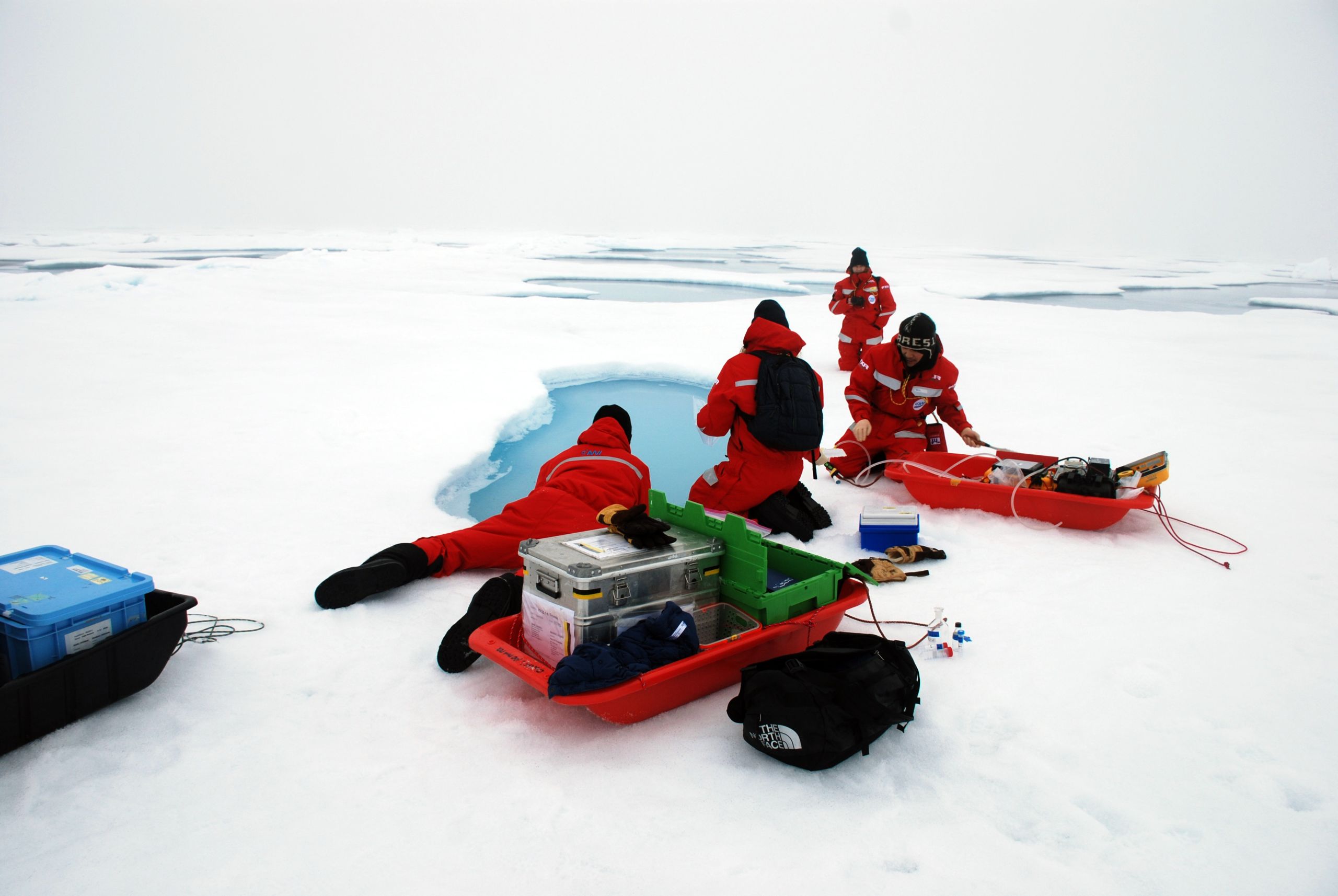
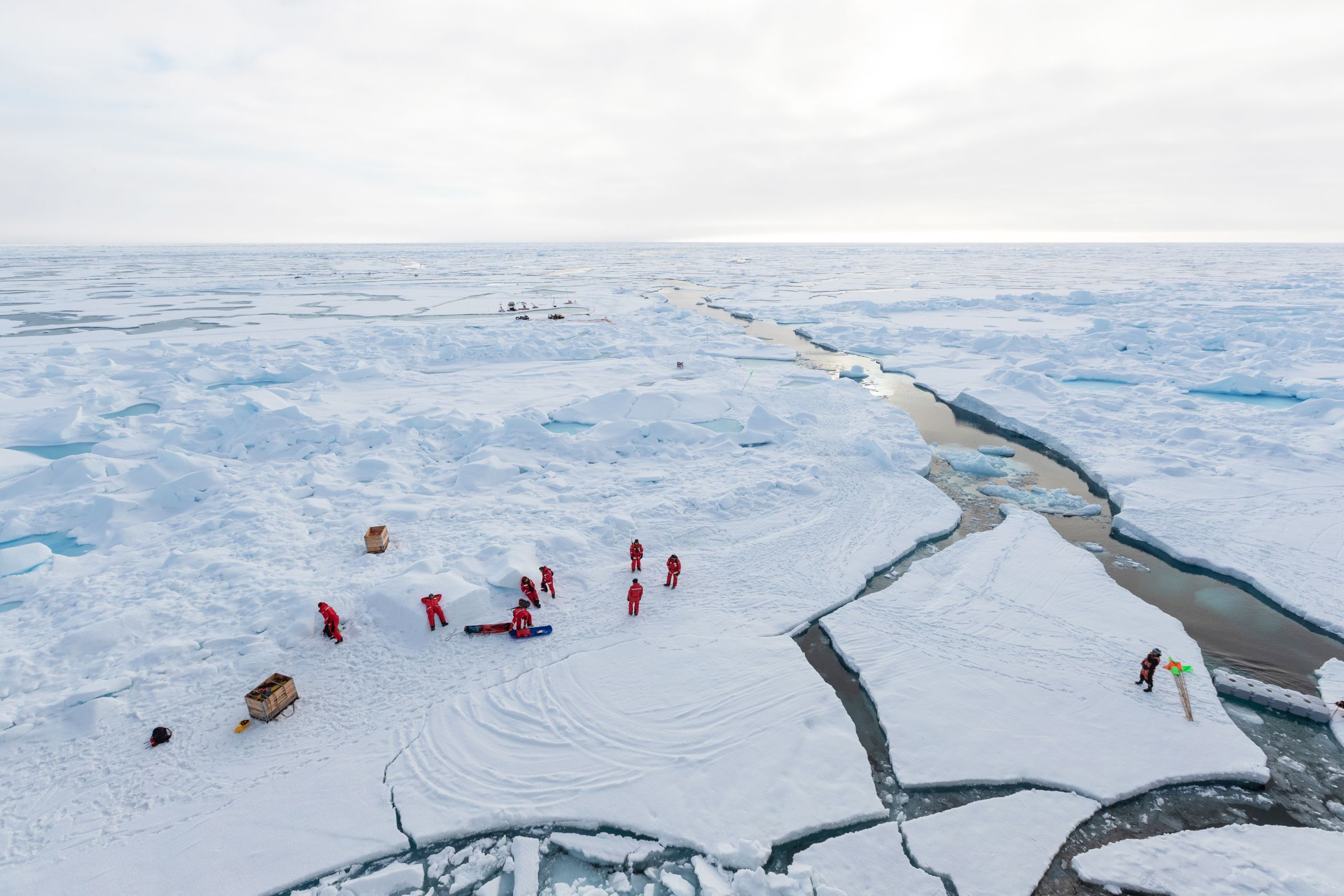

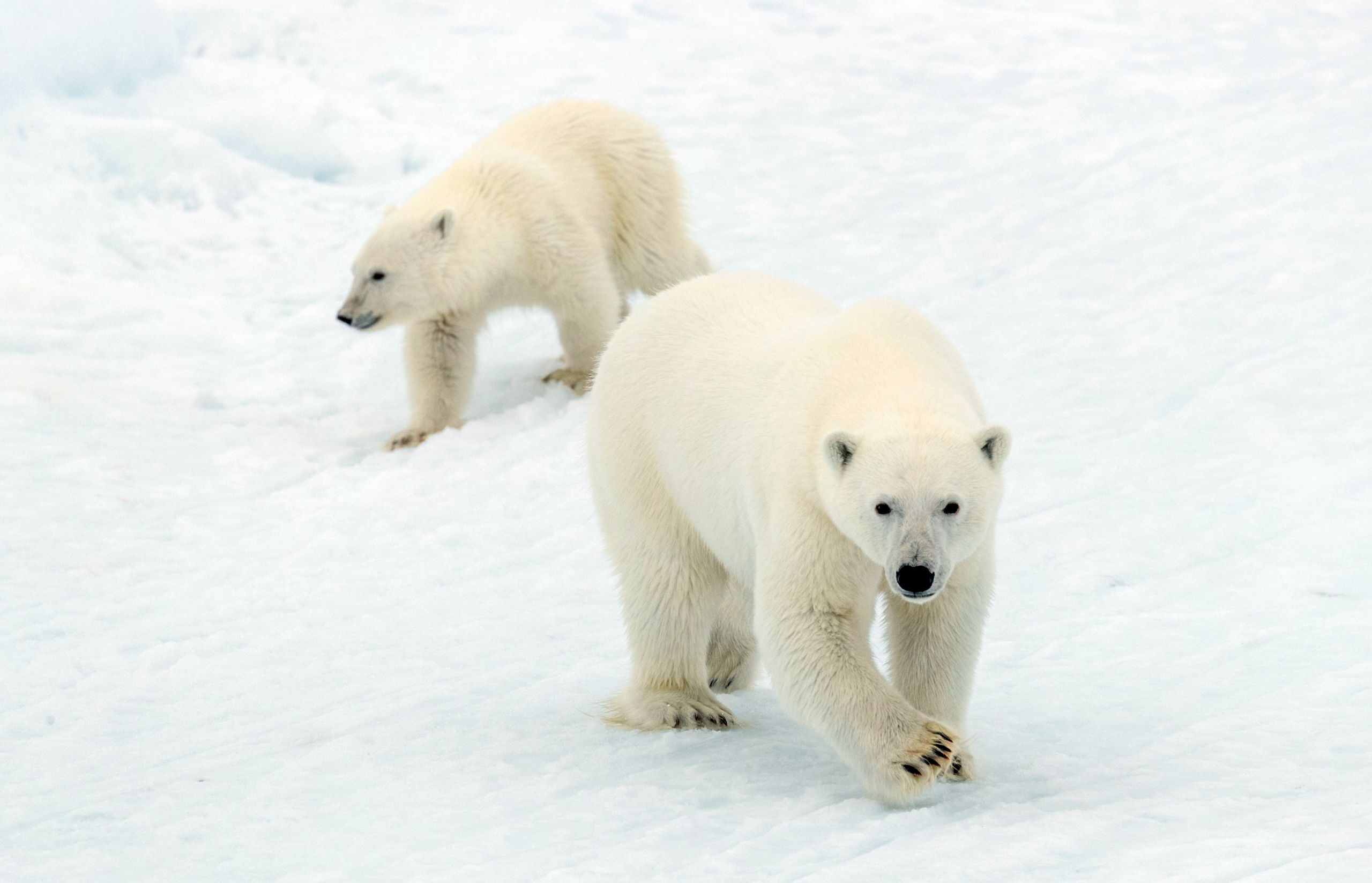
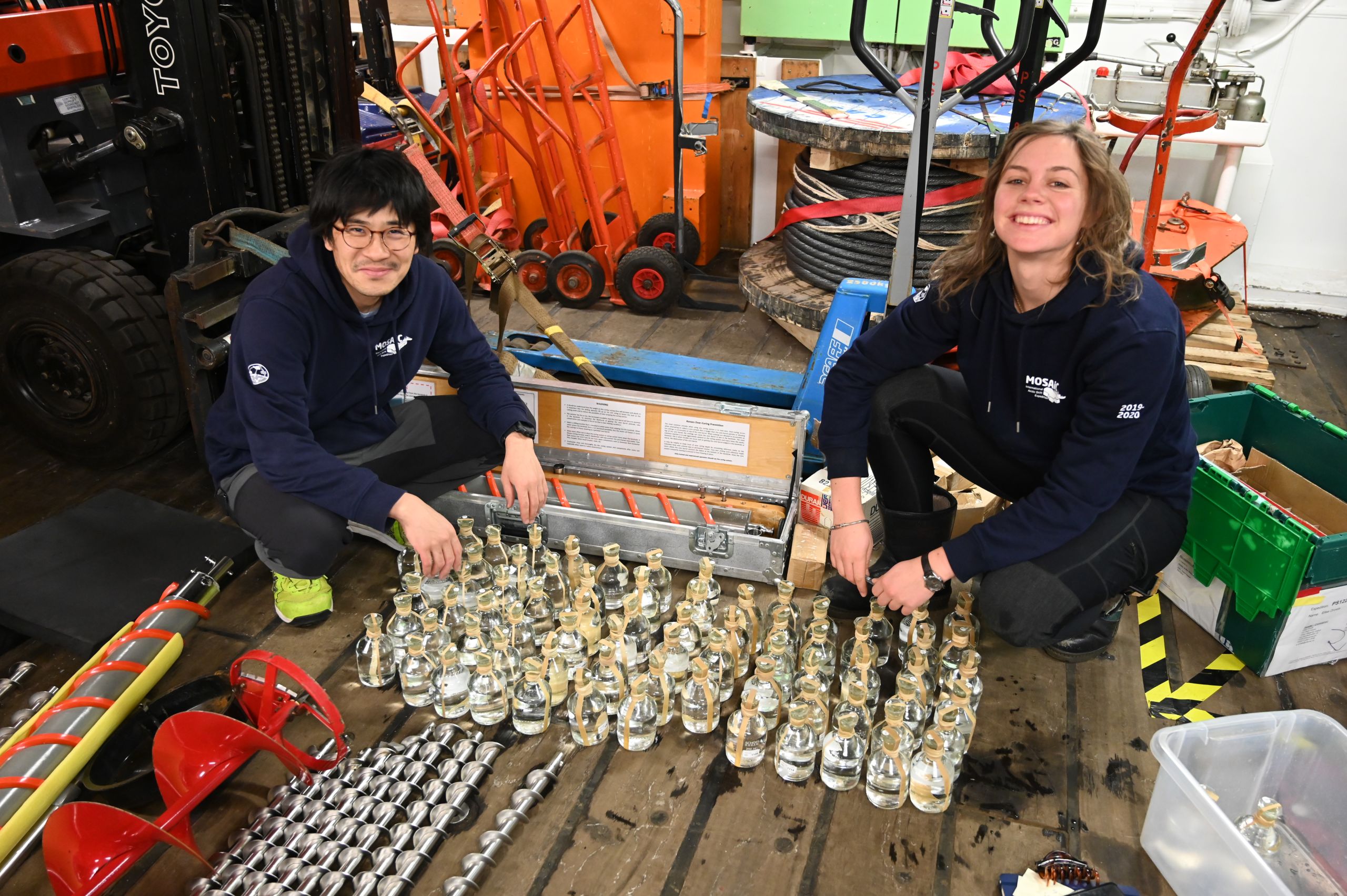

Photo by the author
Photo by the author

Photo: Lianna Nixon
Photo: Lianna Nixon

Photo by the author
Photo by the author

Photo: Lianna Nixon
Photo: Lianna Nixon

Photo by the author
Photo by the author
Life onboard was intense, but intense in the sense that I wanted to make the most out of every minute; intense in a very positive way. There was so much beauty around me and I wanted to make sure that I could take it all in, while doing the work required of Team ECO, making sure I was collecting the samples I needed for my project and that of others, learning as much as I could from the other scientists, and just trying to do the best science I could.
I personally never felt isolated when at sea and my favourite aspect of being onboard was spending time with the people and marvelling at the ocean, sea ice, and wildlife together.
"People are considerate, tolerant, and empathetic. It’s an approach or mental state that you need to adopt when going to sea, because you can’t run away from problems or challenges"
You get to know the people really well; you have to work closely together, coordinate scientific activities, and agree on the planning. Working on a ship can also be very emotionally challenging, especially when you are sleep deprived and stressed. But the support of the people around you is amazing. People are considerate, tolerant, and empathetic. It’s an approach or mental state that you need to adopt when going to sea, because you can’t run away from problems or challenges. And both scientists and crew also need a bit of fun, so people are always keen to organise social events.
A word of advice: always bring a lot of chocolate on a ship, and beware the fresh-food-fantasies! They become very prominent at the end of an expedition. We stopped by Svalbard on our way back from the high Arctic and took on a delivery of fresh vegetables. Fresh tomatoes and cucumber never tasted so good!
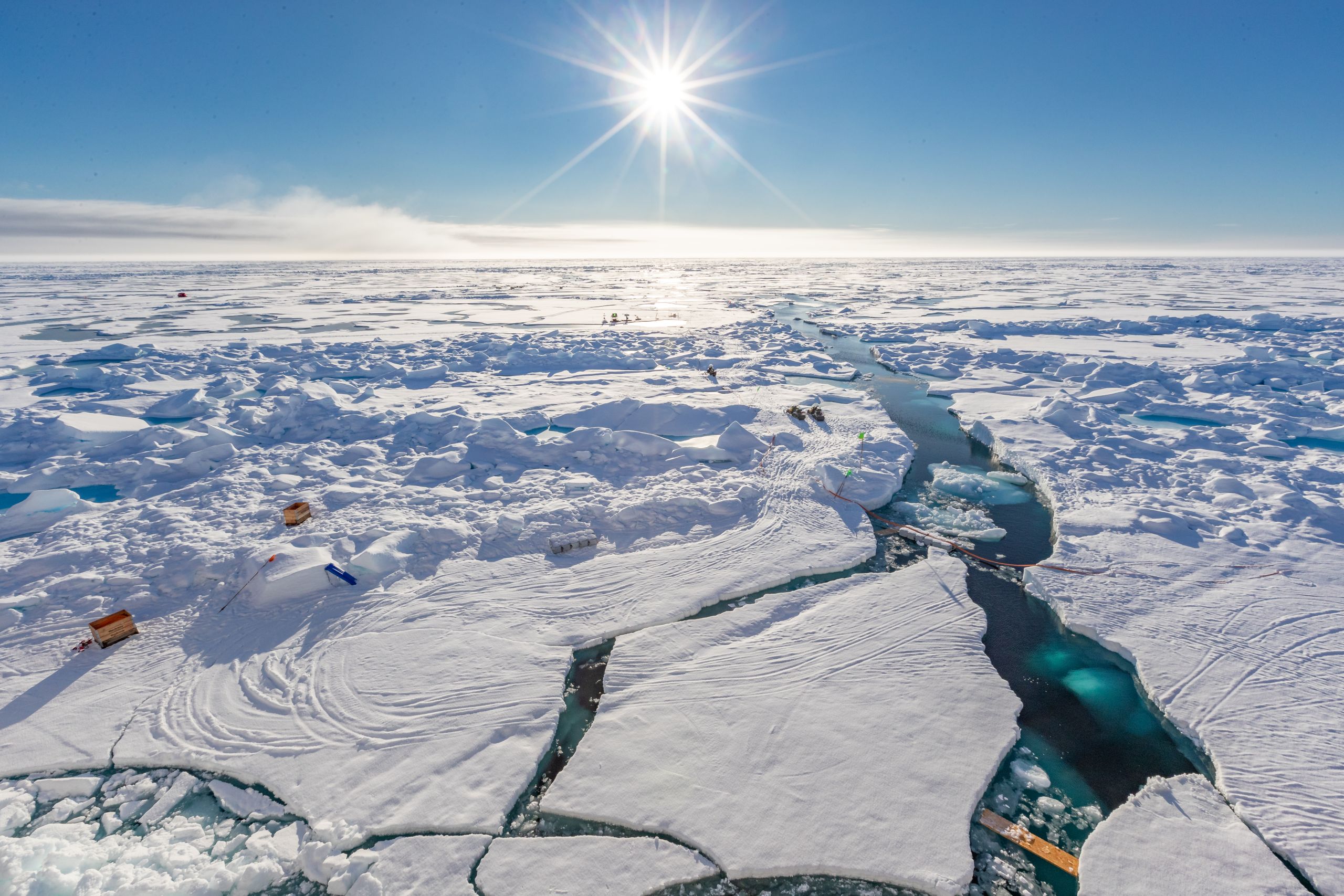
The energy budget 'flips'
One of the objectives of our leg was to capture that moment when the energy budget would ‘flip’. This balance of in-coming and out-going radiation – the surface radiation budget – determines how much energy a surface absorbs and how much it reflects/emits. This in turn drives sea ice melt or growth.
During the summer, the radiative balance is so that the surface is absorbing more energy than it is reflecting, enhancing sea ice melt. In the winter, it’s the other way around: the sea ice reflects more radiative energy than it absorbs, enabling more sea ice growth. The switch between the two happens quite rapidly at the end of the summer season and we often refer to it as the onset of freeze-up of the Arctic for that year. We wanted to capture this moment in our observations to plot out the context of what happens to the Arctic Ocean as it plummets into its icy winter.
At the beginning of our leg, the sea ice was covered with beautiful blue melt ponds. By the end, everything was white; melt ponds were freezing and there was a layer of snow covering the ice floes. The landscape was changing in terms of its physical condition, implicating the biogeochemistry of all spheres. The amazing thing was that we could see this happening with our own eyes. It’s incredible to be able to link the changes in the numbers of our measurements to a visual experience. It was absolutely stunning.
Being able to witness this moment (both in experience and in the measurements) is a very important part in understanding the annual cycle within the Arctic.
Back in the lab
Back in the lab at UEA I’ve returned with many happy memories – and 600 gas-tight glass borosilicate bottles containing seawater. My colleague Gareth Lee and I have analysed them using two VINDTA instruments (versatile instrument for the determination of total inorganic carbon and total alkalinity). These instruments take two aliquots of a specific volume of the seawater in the bottle: one for the determination of dissolved inorganic carbon, and one for total alkalinity.
Once the inlet tube is put inside the sample bottle, the rest of the measuring process is automated. The switching between samples needs to be done manually every 20 minutes or so. The instruments are true to their name, versatile, but they can be volatile, too. Sometimes it’s just not their day and you just have to try again another time. They require quite a long time to “warm up”, to get the system conditioned and stable.
Last week our @MOSAiCArctic seawater samples finally arrived at @uniofeastanglia, having overcome COVID-19 and Brexit complications, thanks to people at @AWI_Media, @ueaenv, and @regionalfreight 🎉👏 Let’s do some carbonate chemistry! 🧪 🥼 💃 COVID-style 😷 pic.twitter.com/CGMzTcXdxV
— Elise Droste (@Elise_Droste13) March 30, 2021
This means that lab days are long. Gareth would start in the lab at 3am, and I would take over around noon, continuing until the minimum samples per day had been run, which often meant staying until late in the evening.
We’re hoping to learn what processes drive the variability that we see in the carbonate chemistry of the Arctic Ocean. Once I have the data processed, I’ll be able to look at the vertical profiles and link the patterns with the data collected by others, such as salinity, temperature, nutrients, concentrations from other gases, isotopes, net primary productivity… the list goes on.
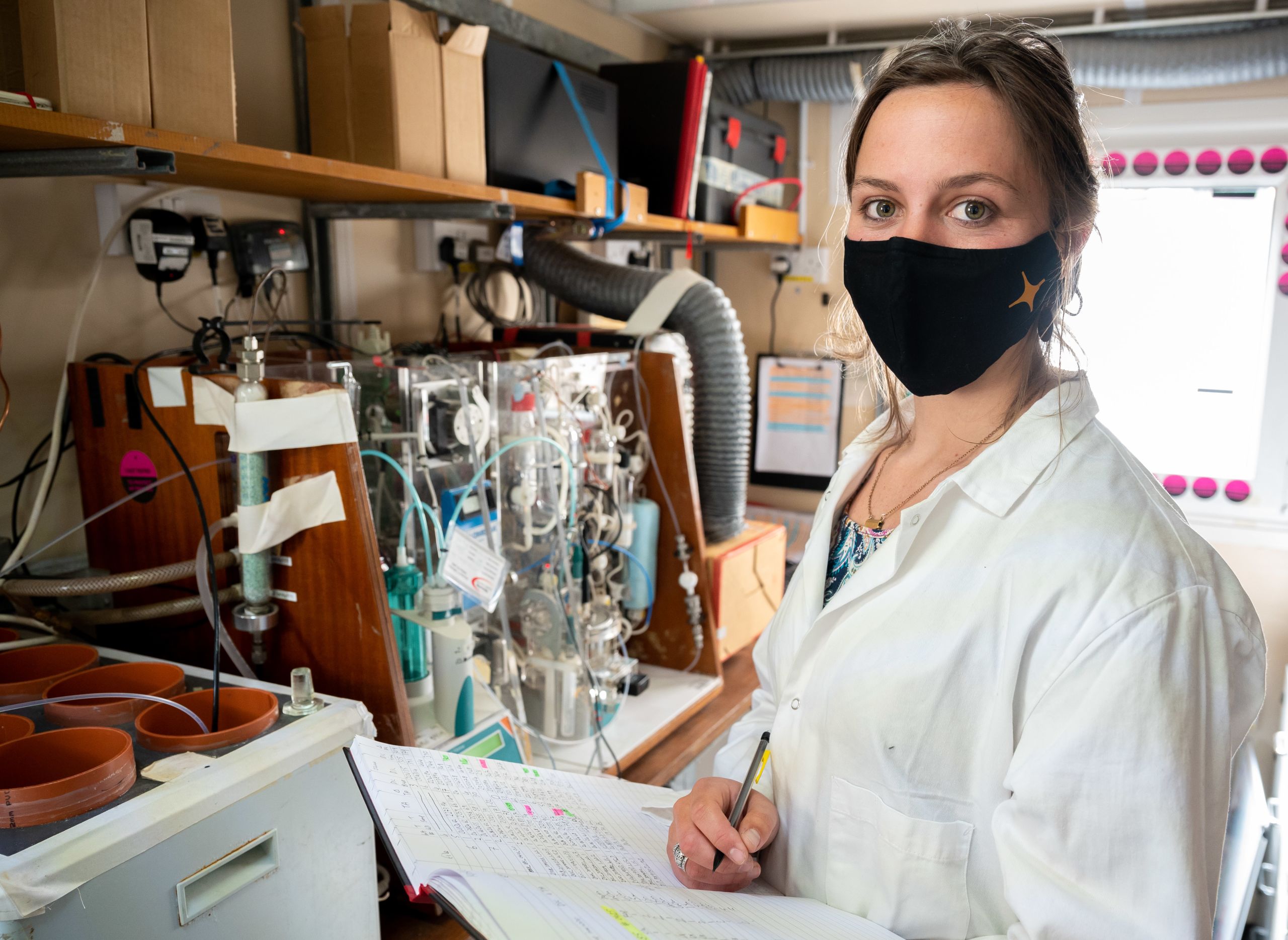
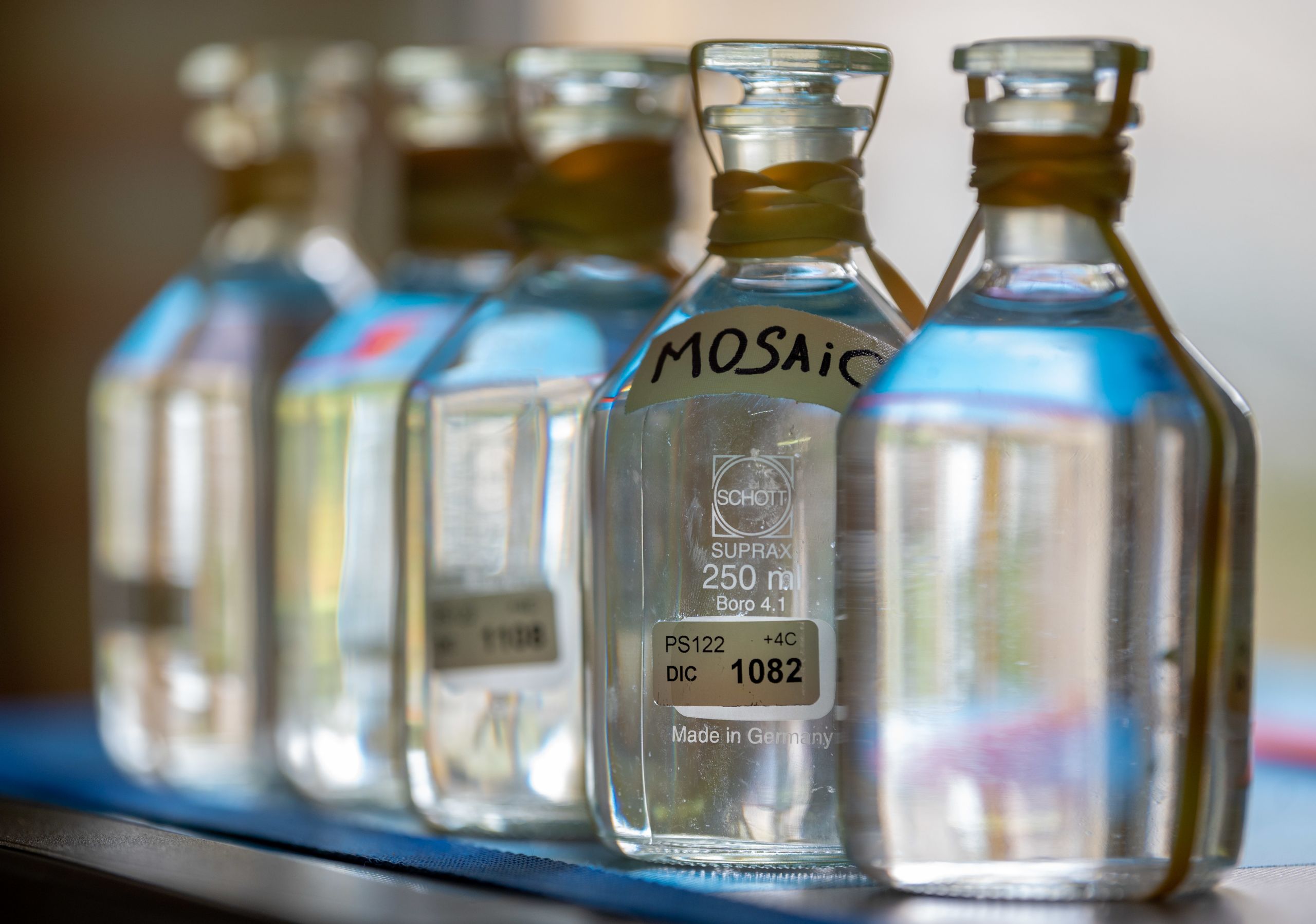
I hope to discover what this means for the future. Will these important processes change with a changing climate? How will that affect the carbonate chemistry and thus the exchange of CO2 with the atmosphere? I also hope to apply what I’ve learned to Southern Ocean research.
The two polar oceans are different systems but I hope this research will help our understanding of the carbonate chemistry of both polar regions.
"Will these important processes change with a changing climate?"
I have always loved the ocean and my interest in the polar regions grew when I started at UEA. Doing research in polar regions was something that had seemed so far out of my reach that I hadn’t ever really considered it. It felt like going to space. But once it was within reach, it was like a whole new world opened up to me. And I just can’t let it go.
Funding from the NERC Arctic Office and the Department for Business, Energy and Industrial Strategy supported Elise’s research trip. Read more about climate research at UEA.
Photos: Elise Droste, Lianna Nixon, Alfred-Wegener-Institut / Michael Gutsche, Neil Hall


